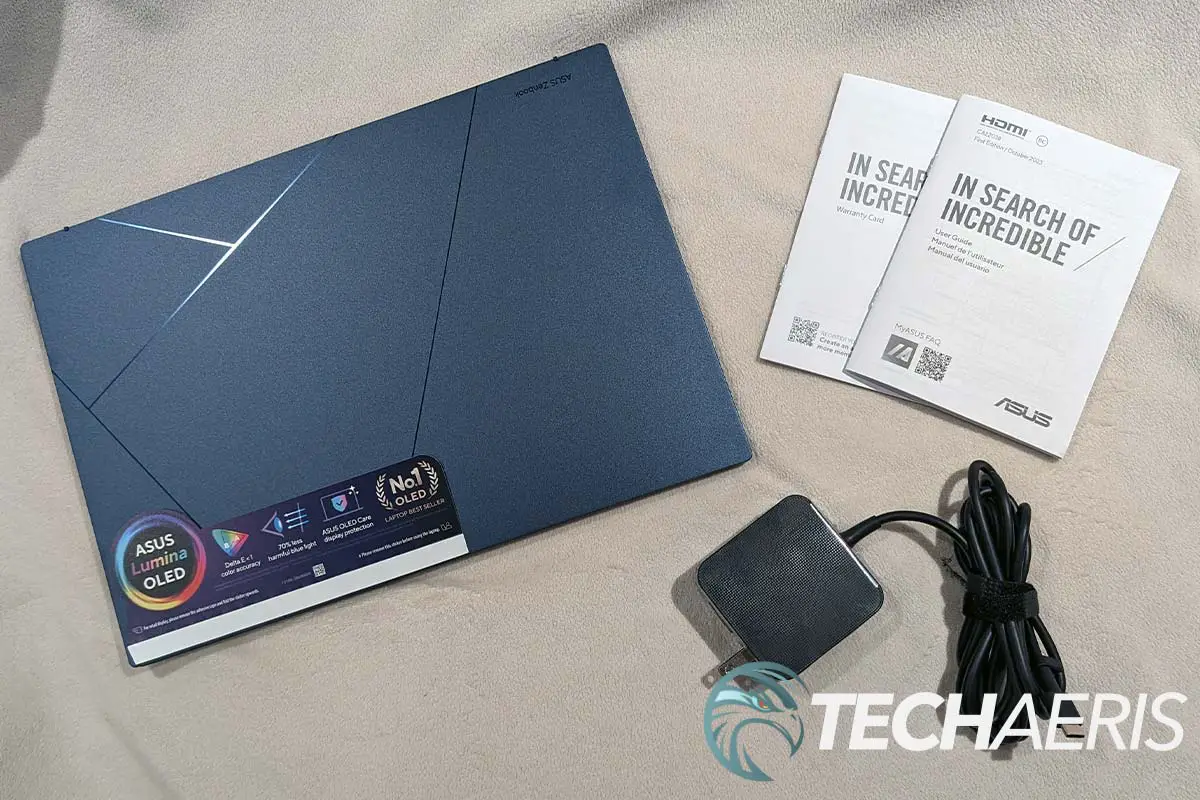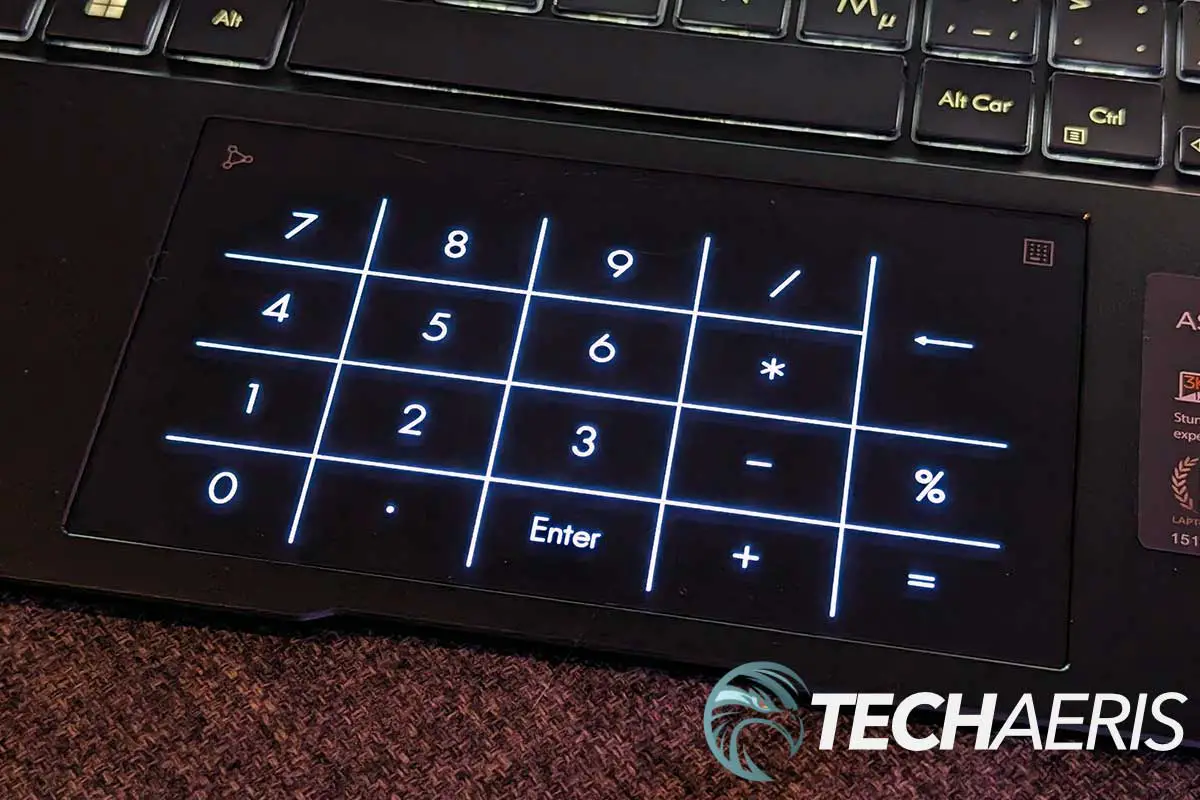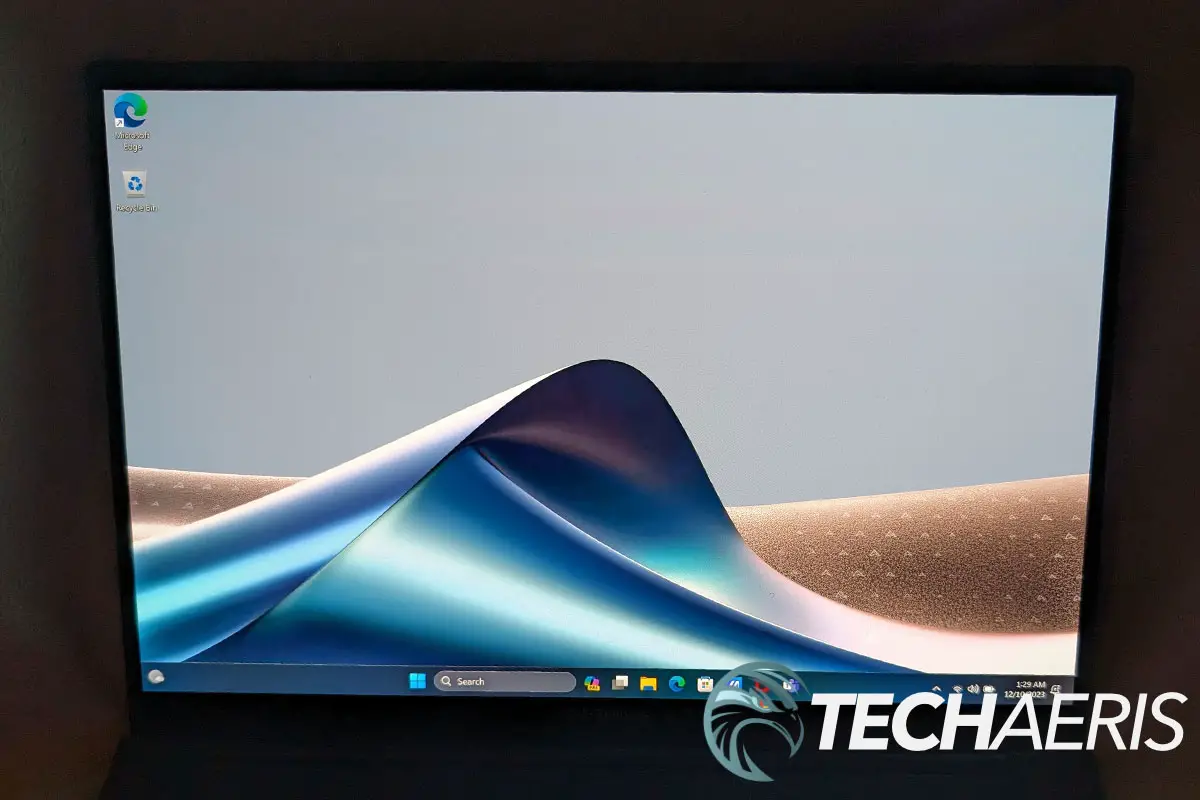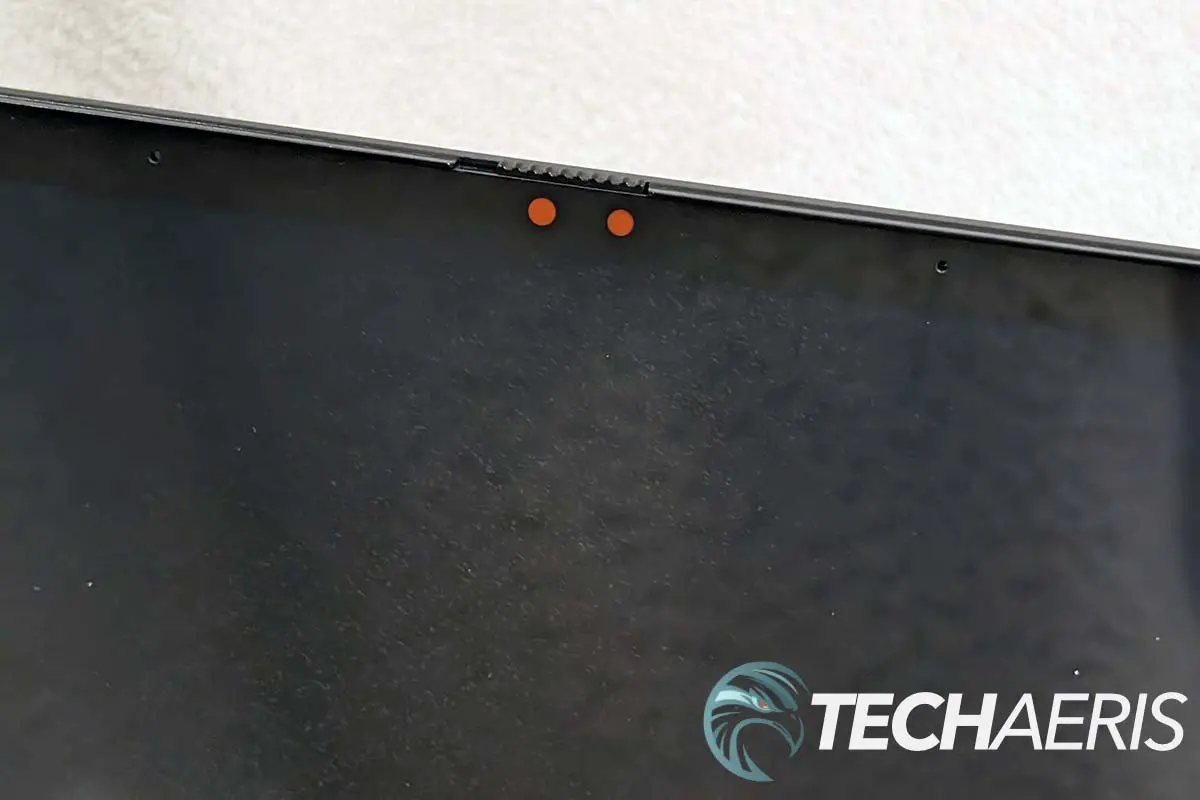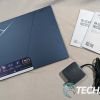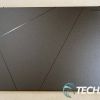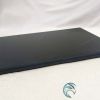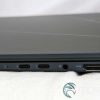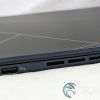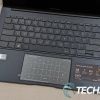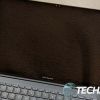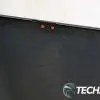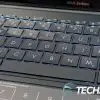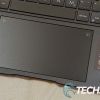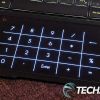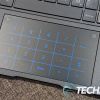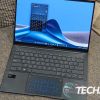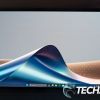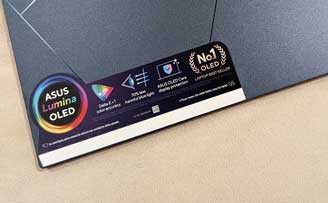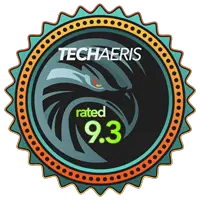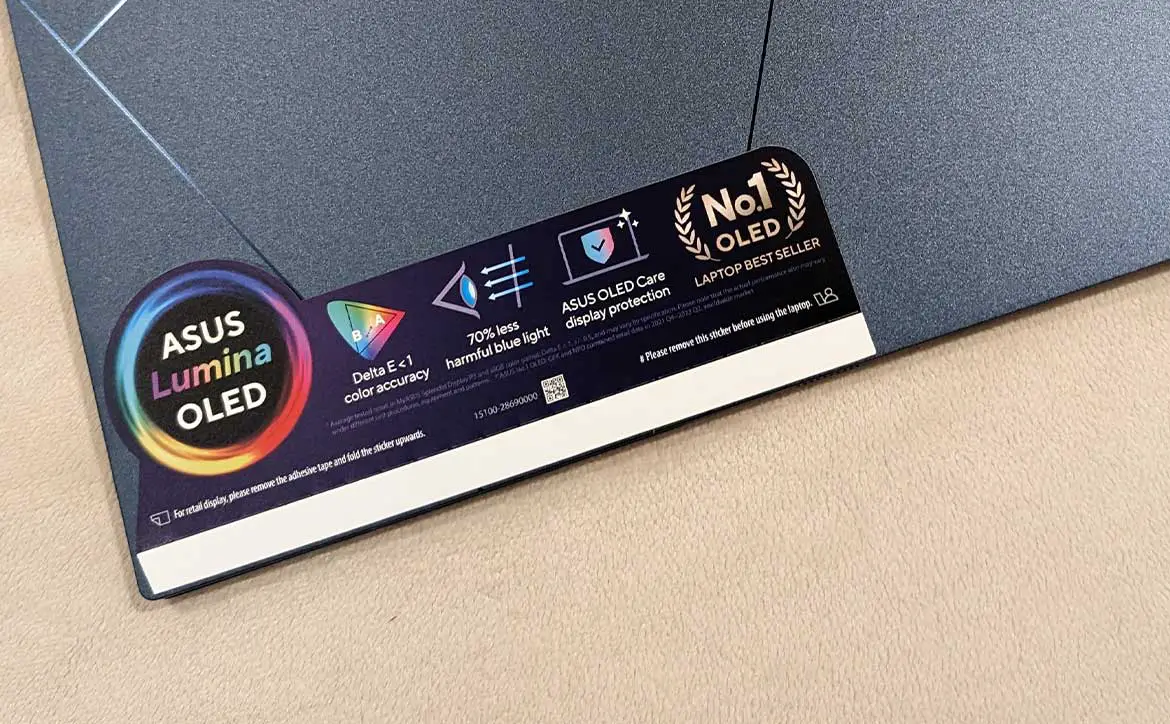
Working on the go is mainstream and as a result, laptops have become smaller, more portable, and with better features and battery life. The latest Intel Core Ultra processors only increase the performance and flexibility of these ultraportable laptops.
Estimated reading time: 13 minutes
Our ASUS Zenbook 14 OLED review takes a look at a 14-inch ultraportable laptop with an Intel Core Ultra 7 processor, exceptional battery life, an OLED display, and a few other cool features. Read on to see why it’s a Top Pick of 2024 here at Techaeris.
Table of contents
The Quick Take
The ASUS Zenbook 14 OLED is a fantastic ultraportable laptop with many features that enhance your productivity and workflow. With features like focus mode for dimming non-focused windows to the ASUS NumberPad 2.0 which integrates an LED number pad in the trackpad and everything in between, it makes it easier to focus and complete the task on hand. Dual USB-C/Thunderbolt 4 ports alongside a full-sized HDMI port also make it easy to extend the functionality of the Zenbook 14 OLED.
In addition, the 14″ 4K 120Hz OLED touchscreen is very crisp, easy on the eyes, and nice to use over extended periods. Battery life is great as well and I was often able to get between 8-10 hours of use before needing to plug in. The performance of the new Intel Core Ultra 7 processor with its Neural Processor Unit was great for most tasks, albeit you’ll want a different system if you’re doing a lot of video processing or gaming.
If you’re in the market for a new laptop for work or everyday computing tasks, the ASUS Zenbook 14 OLED is a solid choice.
Specifications
The ASUS Zenbook 14 OLED (UX3405MA) we reviewed has the following features and specifications (configurable when ordering):
| CPU | Intel® Core™ Ultra 7 155-H processor (Intel® Core™ Ultra 5 125-H processor available) |
| Display options | • 14” 16:10 3K (2880 x 1800) 120 Hz OLED touchscreen • Four-sided NanoEdge with 87% screen-to-body ratio • 550-nits peak brightness • 100% DCI-P3 • DisplayHDR™ 500 True Black |
| Graphics | Intel® ARC™ Graphics |
| Main memory | 16 GB 7467 MHz LPDDR5x (onboard) |
| Storage | 1 TB PCIe® 4.0 NVMe® M.2 SSD |
| Connectivity | Dual-band WiFi 6E (802.11ax) + Bluetooth® 5.3 |
| Camera | • ASUS AiSense Camera • FHD 3DNR IR camera with ambient light and color sensor |
| I/O Ports | 2x Thunderbolt™ 4 USB-C® with full-range charging (5–20 V) 1x USB 3.2 Gen 1 Type-A 1x standard HDMI® 2.1 (TMDS) 1x combo audio jack |
| Touchpad | ASUS NumberPad 2.0 (optional feature) |
| Audio | • Harman Kardon-certified Dolby Atmos® sound system with 2 built-in speakers • Built-in array microphone with Cortana and Alexa voice-recognition support |
| Battery | 75 Wh lithium-polymer battery |
| AC Adapter | 65 W Type-C® power adapter |
| Operating system | Windows 11 Home (Windows 11 Pro available) |
| Colour | Foggy Silver or Ponder Blue |
| Dimensions | 312.42 x 220.05 x 14.9 mm (12.3 x 8.66 x 0.59in) |
| Weight | 1.2~1.28kg (2.65~2.82lbs) |
What’s in the box
- ASUS Zenbook 14 OLED
- 65 W Type-C® power adapter
- User Guide
- Warranty Card
Design
As far as the design goes, the ASUS Zenbook 14 OLED looks pretty similar to many other ultraportable laptops on the market. The chassis and lid are constructed from lightweight aluminum alloy, allowing it to be relatively light and thin. Weighing in at only 2.65 lbs (1.2 kg), it is just under 0.59″ (14.9mm) thick, making it perfect for portability. The aluminum chassis feels very nice and premium, as well as giving the Zenbook 14 OLED a very sturdy feel to it.
Our review unit came in the stylish-looking Ponder Blue colour. The anodized lid has the ASUS Zenbook wordmark in one corner and is finished with four lines to add an extra touch of style and class. The lid opens on a single hinge that covers almost the entire width of the lid. Given the size, the keyboard is missing the number pad (more on that in a minute) and features five full-height rows of keys with the function row at the top featuring half-height keys. The arrow keys in the lower right are also half-height with the up and down keys taking the space of a single full-height key.
Typing on the backlit ErgoSense Keyboard is great with its 19.05mm pitch and 1.4mm key travel, feels smooth, and is very responsive. During my typing tests, I was able to consistently get above 105wpm. The backlight is subtle, with three brightness levels, as well as disabled. The ErgoSense touchpad is rather large, just under 5″ wide and 3″ tall, with plenty of surface for moving the cursor and using multitouch gestures. Again, it is responsive and I didn’t have any issues with it the few times I used the laptop without a mouse.
An optional feature, which came equipped on our review unit, is the ASUS NumberPad 2.0. Located at the top left and right are two icons, one a triangle with circles at each corner, and the other a calculator icon. Swiping right on the triangle icon launches the Windows 11 Calculator app. On the other hand, long pressing the calculator icon on the upper right of the touchpad toggles on an LED-illuminated numeric keypad integrated right into the touchpad! It is a cool feature, works great, and is perfect for number crunchers.
The display itself does have minimal bezels, measuring about 1/8″ on the sides, just over 1/4″ on the top, and about 1/2″ on the bottom. The ASUS Zenbook is printed in silver centered in the bottom bezel. In the top bezel is where you’ll find the front-facing AWSUS AiSense Camera which boasts an FHD resolution and IR camera with ambient light and colour sensor for Windows Hello biometric login. Once set up, the Windows Hello facial login was quick and I had no issues with it regardless of how bright or dim the lighting in the room I was working in was. Located above the cameras on the top edge of the display is a physical camera privacy shutter. When moved to the right to cover the cameras, two orange dots appear over the cameras so you can easily tell that the privacy shutter is covering them.
For the size, the ASUS Zenbook 14 OLED has all the ports one could need. On the left edge, you’ll find a single USB 3.2 Gen 1 Type-A port. Three air vents for ventilation are also located on the left edge. The right edge features two Thunderbolt 4 USB-C ports with full-range charging, allowing you to easily add a hub for even more ports should you need it, as well as a full-sized HDMI 2.1 port and 3.5mm audio combo jack. The USB-C ports double as charging ports for the included 65-watt power adapter.
Flipping the Zenbook 14 OLED over, you’ll find the two down-firing speakers towards the front edge on the sides, as well as some smaller vent grilles near the back for airflow ventilation.
Overall, not only does the ASUS Zenbook 14 OLED look slick, but it is also well constructed, lightweight, and feels very durable — a must-have for a laptop you might be taking with you frequently.
Display
The 16:10 14″ ASUS Lumina OLED HDR NanoEdge display with 2880×1800 resolution and 120 Hz refresh rate on the Zenbook 14 OLED gives users a sharp visual and smooth experience. It is also VESA DisplayHDR 500 True Black certified, utilizes a customized colour gamut to meet 100% DCI-P3 coverage, OLED Power Saving, and ASUS Tru2Life technology to offer a very realistic-looking colour display.
With a peak brightness of 550 nits, I found the display was more than suitable for use in a variety of ambient light settings. This included sitting in a room with bright lights on, in front of an outside window during the day, or in a dimly lit room later in the evening.
Whether it was document editing, working on reviews (like this one), photo editing in Lightroom, or streaming Netflix or YouTube, the 2800×1800 Lumina OLED display is sharp and crisp, has great colours, and didn’t disappoint. The 120Hz refresh rate and 0.2ms response time were perfect for everything I used the laptop for. I also had no issues with the touchscreen performance of the device the few times I was using it in such a way.
In addition, the display supports sRGB for web content/browsing, DCI-P3 for watching videos, and Display-P3 to more accurately mirror everyday viewing. Switching between these modes offered subtle differences, but made consuming specific types of content much more enjoyable.
One issue with OLED is burn-in. With ASUS OLED Care, the company has taken steps to help prevent this. With a specially designed screensaver which illuminates and darkens all pixels equally, the Zenbook 14 OLED also has a pixel shift option to further prevent burn-in. When enabled, I didn’t even notice the pixel shifting while using the laptop at all.
Software
Windows 11
Windows 11 has been out for a while now and more systems are shipping with it. Our review unit shipped with Windows 11 Home, although you can opt for Windows 11 Pro as well. Windows 11 ran just fine on our system as configured. In addition to Windows 11, the only other pre-installed apps were GlideX, McAfee, and MyAsus.
MyASUS
I’m usually not a fan of most “add-on” control panels or software packages outside of what comes with Windows by default. MyASUS is the company’s hub but actually comes with a lot of useful features. The home page gives you a glance at your remaining battery life, CPU load, memory usage, and hard disk space.
The settings section lets you further tweak power & performance, audio & visual features, and input device settings. One of my favourite hidden features here is called Target Mode. When enabled, the brightness of the active window remains unchanged while non-focused windows and desktop is dimmed for power saving. Not only that but I found that it also helped me focus better on the task at hand.
MyASUS also lets you diagnose your system, check for updates, contact customer support, and other useful features.
Performance
During real-world usage, I didn’t notice any slowdown during most tasks I was completing when using balanced mode on the ASUS Zenbook 14 OLED ultraportable laptop. Apps like web browsing, Adobe Lightroom and Photoshop, streaming services, and the like all performed well. Even when having three browser windows open with multiple tabs, I encountered no issues with the system slowing down or appearing to lag at all. For more CPU-intensive programs like Adobe Premiere, I did find that upping to performance mode helped a bit, albeit at the sacrifice of some battery life.
As I usually do, I ran the usual hard drive read/write benchmarks:
| CrystalDiskMark SEQ1M Read (Q8T1) | 5013.07 MB/s |
| CrystalDiskMark SEQ1M Write (Q8T1) | 3485.27 MB/s |
| AS SSD Seq Read | 3915.10 MB/s |
| AS SSD Seq Write | 1867.09 MB/s |
| ATTO Seq Read (max) | 4.19 GB/s |
| ATTO Seq Write (max) | 4.65 GB/s |
The WD PC SN560 SDDPNQE-1T00-11 1TB NVMe SSD performed fairly decently in benchmark tests, albeit with some variation between the different benchmarks.
I did try a few games as well (because who doesn’t like to game from time to time) and found that cloud streaming with Xbox Game Pass was the best way to game on this system. Other games worked o.k., albeit at lower settings and resolutions. Your typical puzzle type and simpler games worked just fine. In case you’re interested in actual benchmarks, Forza Horizon 5 (a more CPU- and GPU-intensive game) achieved 16fps on High settings at 2880×1800 resolution. Dropping it down to 1920×1200 achieved a slightly better framerate at 23fps, with medium settings at the same resolution clocking in at a more (but barely) playable 29fps.
Sound Quality
In the past, laptop speakers have been a sore point for users. ASUS is using dual Super-linear speakers in this system which increase the diaphragm’s amplitude by 50% which results in 2.25 times more volume. The suspension design utilizes dampeners on the four corners further enhancing the stability of vibrations and improving both sound quality and clarity.
I have to say, the dual Harman Kardon-certified Dolby Atmos speakers equipped on the Zenbook 14 OLED are by far some of the best I’ve heard. For starters, they are pretty loud and crisp. When sitting at the laptop and streaming Spotify, 20-25% volume is perfectly acceptable. When cranked to 100%, there is no distortion and the sound does fill the room. When Dolby Atmos for built-in speakers is enabled for output, you can definitely hear the difference when watching movies. While the bass is still somewhat lacking, it is still fairly punchy but not overly warm like I prefer.
Camera
The ASUS Zenbook 14 OLED comes equipped with an FHD IR AiSense Camera. First off, the FHD resolution is welcome as too many laptops these days still fall short. It is crisper and clearer than a lot of other laptops and suitable for video conferencing. In addition, it can detect ambient light levels and automatically adjust brightness and colour temperature to present the best possible image. Other camera features include Background Effect which blurs the background for privacy, Eye Contact which adjusts and locks into your gaze to make it look like you’re always looking into the camera, and Automatic Framing which detects and follows your motion if you’re moving around.
In addition, the IR camera also worked flawlessly for Windows Hello facial login to the system.
Battery Life
While in balanced power mode, with the brightness set to between 50-80% depending on where I was using the ASUS Zenbook 14 OLED, I found I was getting roughly an hour of usage out of 10-12% battery life. More often than not, it was closer to 10% per hour, which means you can expect between 8 to 10 hours of battery life before needing to plug in. While ASUS states up to 15 hours, real-world usage almost always comes in a bit less than the manufacturer’s specifications due to testing methods. Regardless, I found the Zenbook 14 OLED to have excellent battery life compared to other laptops I’ve tested in the past.
Price/Value
With an MSRP of USD$1299.99/CAD$1399, the ASUS Zenbook 14 OLED offers great value for the price. With plenty of features, an OLED display, decent performance, and great battery life, you really can’t go wrong with this ultraportable laptop. Not only that, the CAD pricing is only $100 more than the USD, making it an even greater value for Canadians.
Photo Gallery
Wrap-up
The ASUS Zenbook 14 OLED is one of the best laptops I’ve used in the past while. Great for business use or everyday computing tasks, it comes with some very functional additional features. The OLED display is great, as are the Harman Kardon Dolby Atmos speakers, allowing you to use the laptop for entertainment enjoyment as well. Not to mention the fantastic battery life. It is for these reasons, and more, that the Zenbook 14 OLED is one of our first Top Picks of 2024 here at Techaeris.
ASUS Zenbook 14 OLED
USD$1299/ CAD$1399Nailed it
- Slim, lightweight design
- Fairly decent performance from new Intel Core Ultra chipset
- Fantastic battery life
- Dual USB-C Thunderbolt 4 ports
- Great sound
- Integrated touchpad numpad
- MyASUS software adds helpful features and customization
- Reasonably priced for the features
Needs work
- OK for CPU-intensive tasks like video editing, just a tad slower
- Not great for games requiring higher specs
In some of our articles and especially in our reviews, you will find Amazon or other affiliate links. As Amazon Associates, we earn from qualifying purchases. Any other purchases you make through these links often result in a small amount being earned for the site and/or our writers. Techaeris often covers brand press releases. Doing this does not constitute an endorsement of any product or service by Techaeris. We provide the press release information for our audience to be informed and make their own decision on a purchase or not. Only our reviews are an endorsement or lack thereof. For more information, you can read our full disclaimer.
Last Updated on March 13, 2024.

